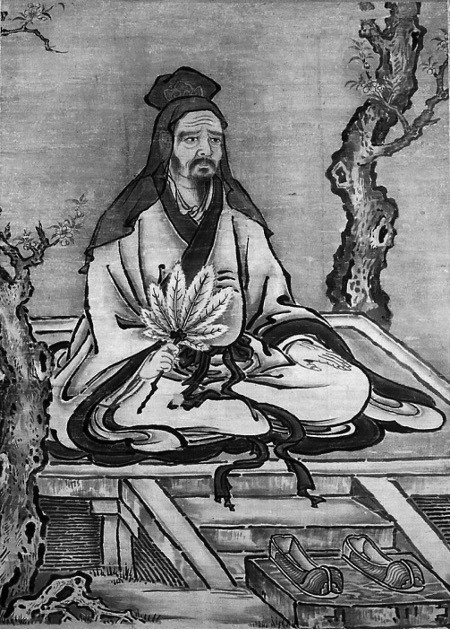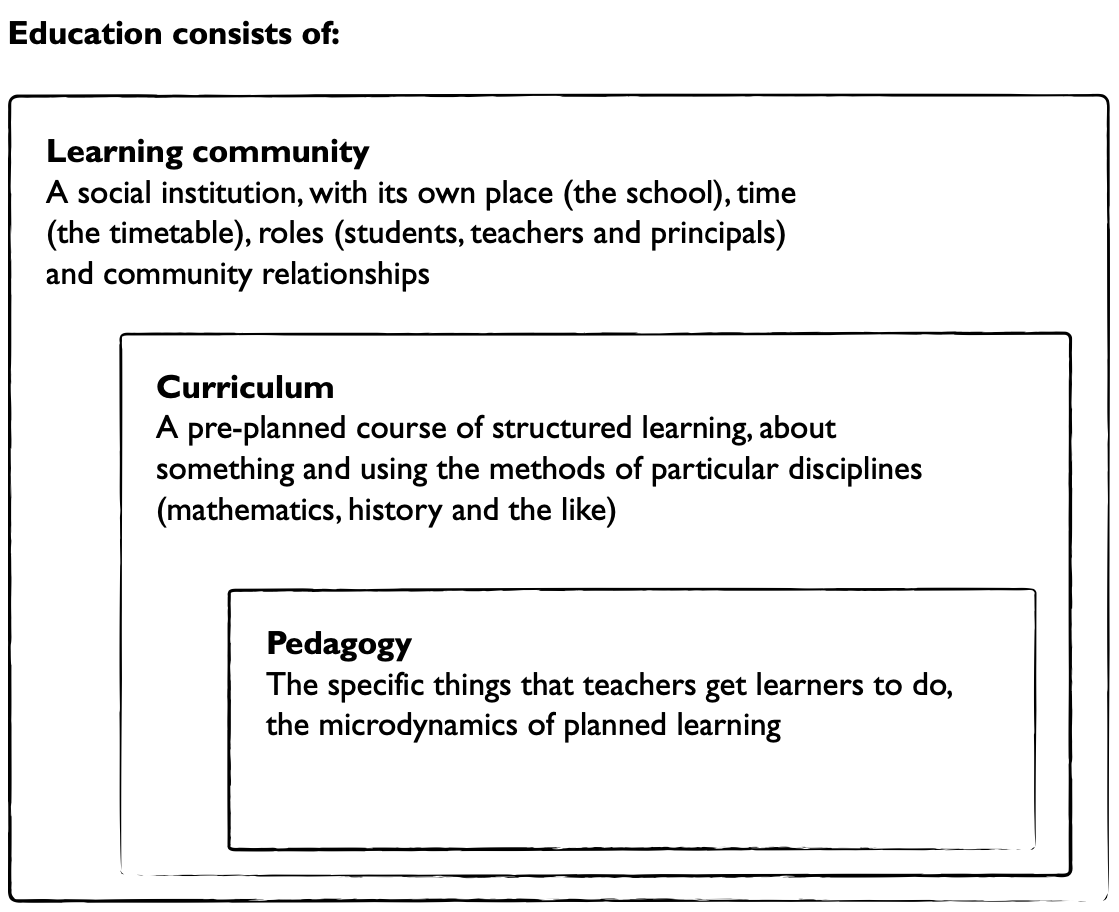Learning and education
What do we mean by ‘education’ – a concept that is now so prominent in public con- versation? The word has traditionally been used with reference to three things.
First, education refers to a learning community, an institution that first appeared along with the emergence of writing as a tool for public administration (to train, for instance, ‘mandarins’ or public officials in imperial China, or the writers of cuneiform in ancient Mesopotamia/Iraq); to support religions founded on sacred texts (the Islamic madrasa, or the Christian monastery); and to transmit formally developed knowledge and wisdom (the Academy of ancient Athens, or Confucian teaching in China).

It should be said that before the invention of writing, the speakers of first or indigenous languages had elaborate education systems – processes by which oral tradition was remembered, spirituality inculcated and the laws of the human and natural world taught. However, the roots of modern educational institutions can be traced to the invention of writing.
Until recently, the practice of institutionalised education, and of writing, was meant to be for the few. It was only in the past two centuries in the West, and in the 20th century in developing nations, that education began to take its modern, universal, compulsory, mass-institutional form: now immediately recognisable in almost every corner of the Earth. When politicians say they are going to support education, they almost always have institution building in mind – new or extended schools, colleges or universities, with their buildings and staff and programs.
Second, education refers to curriculum: the substantive content of learning and its organisation as subjects and topics – mathematics, history, physical education and the like.
Third, education refers to pedagogy, or the planned and deliberate process whereby one person helps another to learn. This is what first peoples did through various formalised rites of passage, from child to adult to elder – learning law, spirituality and nature. It is also how teachers in the era of modern, mass, institutionalised education have organised the learners in their classrooms and their learning.
This three-part meaning of education connects several related concepts: ‘pedagogy’, or the microdynamics of moments of teaching and learning; ‘curriculum’, or the learning designs for particular areas of knowledge; and the overall institutional setting in which pedagogy and curriculum are located.

Education is learning by design
Bringing these three aspects of education together as something that can be known, analysed, configured and reconfigured is the science of education: a discipline or body of knowledge about learning and teaching – about how these practices are organised. This is education as a discipline.
And what of ‘learning’? Learning is much bigger than education. Humans are born with an innate capacity to learn, and over the span of a lifetime learning never stops. Learning simply happens as people engage with each other, interact with the natural world and move about in the world they have built. Indeed, one of the things that makes us distinctively human is our enormous capacity to learn.
Other species learn, too; from the tiniest of insects to the smartest of chimpanzees (Deacon 1997). But none has institutions of education, practices of pedagogy or underpinning knowledge foundations that might be called ‘disciplines’ or ‘sciences’. As a consequence, the main way in which other species develop over time is through the incremental, biological adaptations of evolution. Change is natural. It is slow.
Education makes human learning unlike the learning of any other creature. Learning allows humans to escape some of the determinations of nature. It gives humans the resources with which to understand themselves and their world, and to transform their conditions of living, for better or for worse (Christian 2004).
Education is a peculiarly human capacity to nurture learning in a conscious way, and to create social contexts that have been specially designed for that purpose: the institutions of education. Within the institutions of education, curriculum is a consciously designed framework for learning a body of knowledge, be that a discipline or a coherent set of social competencies or capacities. And within curriculum, pedagogy is the conscious creation of activities to facilitate learning.
Everyday learning happens naturally, everywhere and all the time. Education – the institution, its curriculum and its pedagogies – is learning by design.
